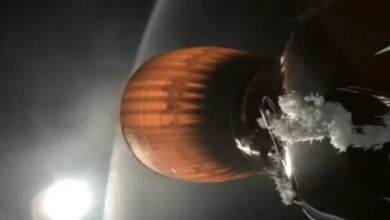Ultimate Meteor Shower Guide 2023: Geminids & Perseids Spectacular Show! Best Viewing Dates & Tips Revealed!

The upcoming celestial event to anticipate is the Geminid meteor shower, active from November 19 to December 24 and reaching its peak on the nights of December 13 and 14.
READ: Decoding the Thrill: Exploring the World of Online Casino Bonus Codes
Contrary to the moonlight interference experienced in 2022, 2023 is expected to offer favorable conditions for meteor shower viewing. Notably, this year holds promise for renowned showers like the Geminids and Perseids.
Geminid meteor
Bill Cooke, leading the Meteoroid Environment Office at NASA’s Marshall Space Flight Center, shared insights with Space.com, providing skywatching tips and details on key meteor showers this year.
Cooke identifies the top three meteor showers for 2023, emphasizing the Geminids and Perseids as the most unaffected by moonlight. He also highlights the intriguing choice of the eta Aquariids, projecting a significant outburst on the night of May 4/5 due to particles from Comet Halley, promising a potentially impressive show.
A graph ranking meteor showers based on the brightness of meteors places the Perseids at the top, followed by the Geminids, Orionids, North Taurids, Leonids, eta Aquariids, S. Delta Squariids, Hydrids, South Taurids, Quadrantids, and the Lyrids.
Considering meteor shower viewing conditions for 2023, Cooke notes favorable circumstances for major events such as the Geminids, Lyrids in April, Orionids in October, and Leonids in mid-November. However, he mentions that the Quadrantids in January and the Ursids at the end of December will be hindered by moonlight.
Summing up, Cooke describes 2023 as an excellent year for meteor shower enthusiasts.
Here are the peak dates for notable meteor showers in 2023:
January: Quadrantids (Peak: January 3-4, 2024)
April: Lyrids (Peak: April 22, 2024)
May: Eta Aquarids (Peak: May 5-6, 2024)
August: Perseids (Peak: August 13, 2024)
October: Draconids (Peak: October 8-9, 2023)
October: Orionids (Peak: October 20-21, 2023)
November: Taurids (Southern Taurids peak: November 4-5, 2023; Northern Taurids peak: November 11-12, 2023)
November: Leonids (Peak: November 17-18, 2023)
December: Geminids (Peak: December 13-14, 2023)
Cooke anticipates an exceptional viewing experience for the Geminids in December 2023, as it coincides with the new moon, ensuring optimal conditions. The Geminids consistently impress, evolving from approximately 30 meteors per hour in the 1830s to well over 100 meteors per hour today.






